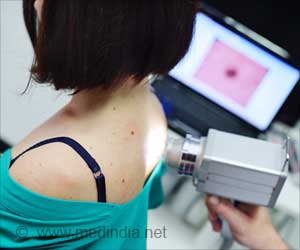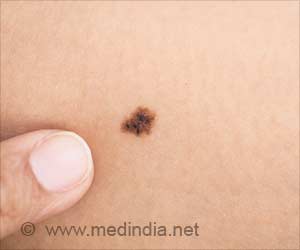- A novel strategy to selectively kill melanoma cells has been identified
- Cells of melanoma could be selectively killed with nifuroxazide, an old antibiotic, which targets melanoma cells with high levels of ALDH1 enzyme, leaving other body cells unharmed
- Melanoma is conventionally treated with BRAF and MEK inhibitors, which block signaling pathways in cells
- Melanoma can be prevented by reducing exposure to the harmful UV-radiation from sunlight
Tumors can contain populations of cells having different sensitivities to anti-cancer drugs. Some of these cells – the dangerous ones – can withstand the onslaught of these drugs and still survive due to development of drug resistance. It has been found that the most dangerous melanoma cells secrete high levels of the enzyme aldehyde dehydrogenase 1 (ALDH1), compared to other melanoma cells.
Read More..
Nifuroxazide for Targeted Cancer Therapy
The researchers in this study exploited this property of melanoma cells to selectively target and kill the ones having high levels of ALDH1 by using the old, repurposed antibiotic, nifuroxazide, which is conventionally used for treating gut infections. Interestingly, this antibiotic is activated by ALDH1, meaning that it’s action begins only after entering the melanoma cells having the highest levels of the enzyme, thereby leaving other cells of the body unaffected. This is of major advantage since it implies that nifuroxazide could be used for targeted cancer therapy.The current treatment strategies for melanoma use BRAF and MEK inhibitors, which block cell signaling pathways. However, it has been observed that some of the melanoma cells become resistant to the BRAF and MEK inhibitors.
Some of these resistant cells have been found to contain high levels of ALDH1, thereby holding promise for a new therapeutic intervention to treat drug resistant cases of melanoma. This scenario was replicated in the lab by a clever experimental design in which melanoma cells having high levels of ALDH1 were selected by treating the cells with BRAF and MEK inhibitors which made many of the cells resistant to these drugs. The surviving cells were high in ALDH1 and were found to be highly sensitive to nifuroxazide.
Need for Further Study
Professor Liz Patton of the MRC Human Genetics Unit and principal investigator of the study, said: “There won’t be one magic bullet for targeting melanoma - the variations that exist within the cancers mean there will need to be combination therapies. When people are given BRAF or MEK drugs to treat melanoma it can result in the tumors having more cells with high levels of ALDH, so we think that’s a really important target. We’ve shown this antibiotic that’s used mostly to target intestinal bacteria can also target and kill cancer cells high in the enzyme ALDH1.”She further went on to say: “It’s great that this antibiotic is approved for use in humans, but it wasn’t designed as a cancer drug, so we still need to find out if it’s safe and effective for cancer in humans - for example, can it get to the cancer in the body and are the doses needed safe? We may need to take the concept for how this antibiotic works and re-design it to make it better at killing cancer.”
Dr. Nathan Richardson, head of molecular and cellular medicine at the MRC, said: “This imaginative study exploits the sensitivity of some cancer cells to an existing antibiotic and could reveal an exciting new approach to both combination treatment and ‘personalized’ medicine by directly targeting drug resistance - a key priority for the MRC.”
Therefore, it may be concluded that this novel treatment strategy could be used as an adjunct to conventional anti-cancer therapeutic approaches for melanoma.
Funding Source
The research study was funded by MRC, the Cancer Research UK Edinburgh Centre, the European Research Council, and the L'Oreal-Melanoma Research Alliance.Notes:
- Nifuroxazide: An oral nitrofuran antibiotic, used since 1966 for treating colitis and diarrhea caused by bacteria.
- Melanoma: The most serious type of skin cancer, characterized by new unusual growth or a change in an existing mole.
- Aldehyde Dehydrogenase: An enzyme that catalyzes the oxidation (dehydrogenation) of aldehydes, converting them into carboxylic acids such as acetic acid.
- BRAF: A protein encoded by the BRAF gene that is responsible for sending signals in cells and in cell growth. The gene may be mutated (altered) in various types of cancer which can produce an abnormal form of the BRAF protein. This can increase the replication and spread of the cancer cells.
- MEK: Also known as mitogen-activated protein kinase kinase, it is a kinase enzyme that phosphorylates and activates mitogen-activated protein kinase (MAPK). It is a component of the cellular signaling pathway, which communicates signals from the surface to the interior of the cell.
- Scientists find old antibiotic may selectively kill dangerous skin cancer cells - (https://www.eurekalert.org/pub_releases/2018-10/mrc-cfo100318.php)
Source-Medindia















